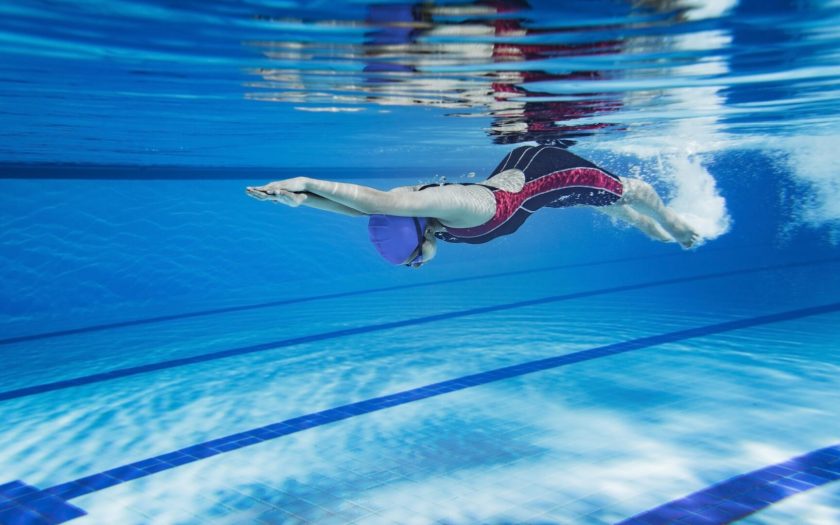Neurosis.
For people suffering from this condition, swimming can be a real lifesaver. Because the water environment is very calming and helps reduce stress levels, which is directly related to neurosis. When a person immerses themselves in water, their body relaxes, and the mind is freed from intrusive thoughts. For example, swimming in warm water can be very helpful for those experiencing stressful situations at work or in their personal lives. The water helps relax the muscles, relieving tension and restoring emotional balance. Exercises such as slow circular movements of the arms or legs in the water not only help relieve muscle spasms but also allow one to focus on breathing, an essential part of the calming process. Moreover, swimming as a physical activity improves blood circulation and stimulates the cardiovascular system, which in turn ensures better oxygen delivery to the brain and other organs, helping to restore emotional and mental well-being. Regular training in the water can significantly reduce nervous tension and improve overall well-being. For those experiencing stress or suffering from depressive neurosis, swimming not only provides physical relaxation but also helps manage emotional exhaustion, restoring inner harmony. Additionally, to improve well-being in such conditions, you may take antidepressants like Ludiomil, to stabilize the emotional state.
Metabolic disorders.
Metabolic issues, such as a slowed metabolism, can lead to excess weight, fatigue, hormonal imbalances, and other serious health problems. Swimming, in turn, has the ability to activate all systems of the body, making it an ideal tool for improving metabolic functions. When a person swims, the body burns calories more quickly and reduces fat deposits, which is especially helpful for those with a sluggish metabolism. Another advantage of swimming is that it improves the function of the thyroid gland, which is directly linked to metabolism. Regular visits to the pool can help to balance the hormonal activity of this gland, which in turn will help to normalize metabolism.
Varicose veins.
Unlike other types of sports, swimming places minimal strain on the body, while the hydrostatic pressure helps reduce swelling. This means that during swimming, veins are not overloaded; on the contrary, they have the opportunity to function more effectively. Swimming styles that engage the legs, such as freestyle or breaststroke, are especially beneficial, as the calf muscles are actively worked during these movements. Another advantage of swimming for varicose veins is the absence of impact stress that occurs during running or jumping. The water significantly reduces pressure on the joints and blood vessels, allowing for exercise without the risk of worsening the condition of the veins. But it is also important to use gels (such as Thrombophob Gel) and take medications (such as Daflon) to improve the condition of the legs.
Flat feet.
Flat feet are not just a cosmetic defect, but a serious disorder that can cause pain, fatigue and posture problems. One of the most gentle and effective methods of improving the condition is swimming. Due to the effect of water, which gently massages the feet, blood circulation is activated, muscle tension is reduced and stagnation in the lower extremities is prevented. This natural massage helps to relieve fatigue and ease the load on the legs. Water exercises are especially useful for children, as flat feet can still be corrected at an early age. But for adults, regular pool sessions are also an opportunity to avoid further complications, such as bunions or the development of osteoarthritis.
Rehabilitation after a heart attack or stroke.
Water creates a gentle environment in which the body is not subjected to excessive stress. This allows you to train your muscles, improve blood circulation and strengthen your cardiovascular system without the risk of overstrain. Swimming helps to stabilize breathing, reduce shortness of breath and gradually restore endurance. In addition, it has a positive effect on the nervous system — water calms, reduces anxiety and helps to overcome the emotional stress that often accompanies the recovery period. For example, leisurely backstroke or water walking are gentle but effective methods to restore body mobility and confidence. Such exercises do not create excessive stress, but actively stimulate the muscles and cardiovascular system.

